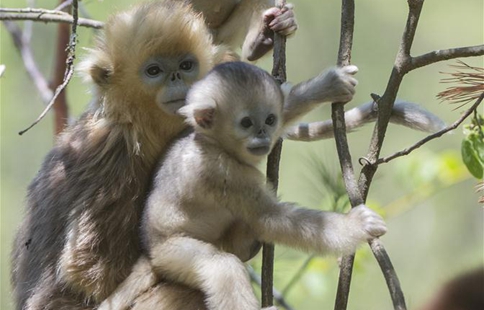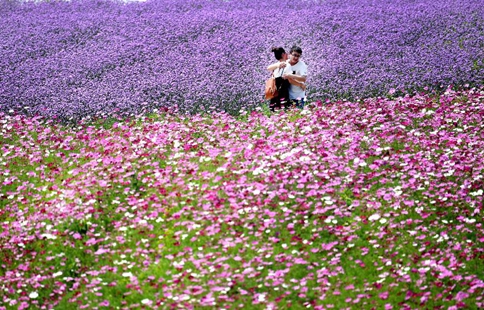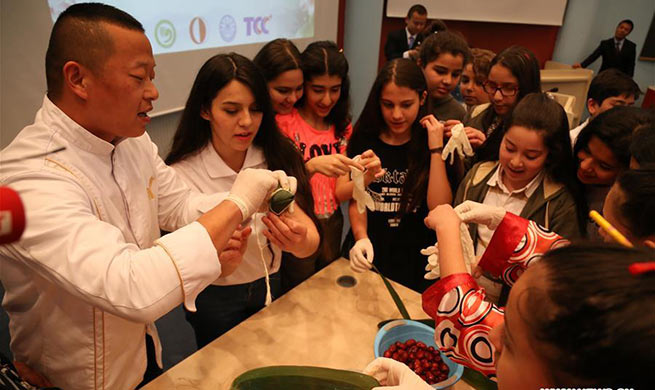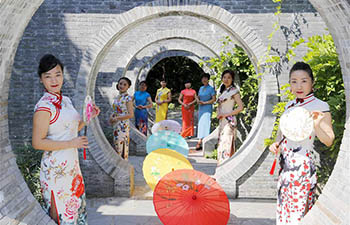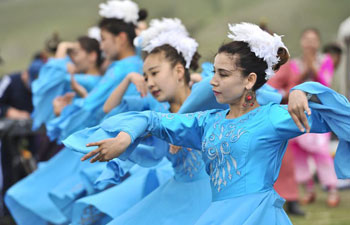BRUSSELS, May 30 (Xinhua) -- The famous comic figure Tintin, known as Dingding in Chinese, is a global-trotting boy reporter who has delighted millions of readers and given Europeans in the 1930s the first impression of China.
China has a special place in the stories of Georges Remi, a Belgian cartoonist who used the pen name Herge.
China is the only country that was featured in two books, namely "The Blue Lotus" and "Tintin in Tibet," in the world-famous adventure series thanks to Remi's affection for China.
Tintin, a 15-year-old junior journalist with his little dog Snowy, often runs into eccentric goodies and dastardly baddies. In "The Blue Lotus," he visited Shanghai in 1936, when he battled the Japanese-funded opium smugglers with the help of his Chinese friend "Chang."
In the later published "Tintin in Tibet," he rescued Chang, whose plane has crashed in Tibet.
Unlike other figures in the series, "Chang" was created on the basis of a real-life person called Chang Chong-jen (Zhang Chongren), who had studied art in Brussels and helped Remi portray China realistically. He and Remi were both born in 1907.
In 1934, to prepare the story of Tintin's journey in China, Remi met and made friends with Chang. The two artists spent one year together, during which Chang introduced Remi to Chinese philosophy, art and literature, and also told Remi about the Chinese people's sufferings during the ongoing brutal aggression of Japan, Chang's daughter Zhang Yifei recalled.
His encounter and friendship with Chang helped Remi get rid of the contemporary stereotype of China and its people. He felt obliged to defeat some cliches circulating among the Europeans at that time.
In a letter to a friend, Remi said "as I prepare my stories (of "The Blue Lotus"), I discovered a real sympathy and admiration for these (Chinese) people. I have a keen desire to understand them and like them."
The two friends exchanged views on art frequently. One day in Remi's yard, Chang pointed at trees there and said that as every single plant was quite balanced and beautiful, it was instrumental that artists reflected the truth of nature.
"The Blue Lotus," the fifth book in the 24-volume Tintin adventure series, relates how Tintin tracked opium traffickers all the way to China and helped the Chinese fight against the Japanese. The book has been viewed as a watershed moment in Remi's career.
Critics said the book was Remi's most realistic and courageous piece, and "unarguably his first masterpiece."
Remi's exchanges with Chang were critical in the development of Tintin's adventures, said French novelist and critic Benoit Peeters.
Remi always referred to the huge influence Chang had had on him, not only as regards the writing of "The Blue Lotus," but also on the general direction of all his Tintin stories, and his other works as well.
"I owe Chang a better understanding of friendship, a regard for poetry, respect for nature ... He was an exceptional person," Remi said in his biography. "He led me to discover and appreciate Chinese poetry and Chinese calligraphy 'wind and bone,' the wind of inspiration and the bone of confident draughtsmanship."
Chang had returned to China before "The Blue Lotus" was published in 1936 and lost contact with Remi during World War II and after.
In the first letter to Chang in 1975 after they resumed communication, Remi thanked his friend "not only for the assistance that you brought me at that time in my work, but also for the knowledge you brought me."
"Thanks to you, my life took a new orientation ... You made me discover the qualities of things, poetry, the feeling of the unity of man and universe," he added.
In 1981, Remi and Chang, a successful artist and sculptor, finally reunited in Brussels after 46 years. Their meeting was broadcasted on Belgian national TV, drawing millions of viewers from around the globe.
Remi died in 1983. Fifteen years later, Chang also passed away. But their friendship endures in the hearts of Tintin's readers in both China and Belgium.
In 2015, China opened a culture center in Brussels and held a special exhibition on Chang's artworks and connection with Remi.
Tintin has become a national treasure for Belgium, just like the panda is one of China's. In February 2016, a panda cub was named "Dingding" in southwest China's southwestern Chongqing Municipality in honor of China's friendship with Belgium.






